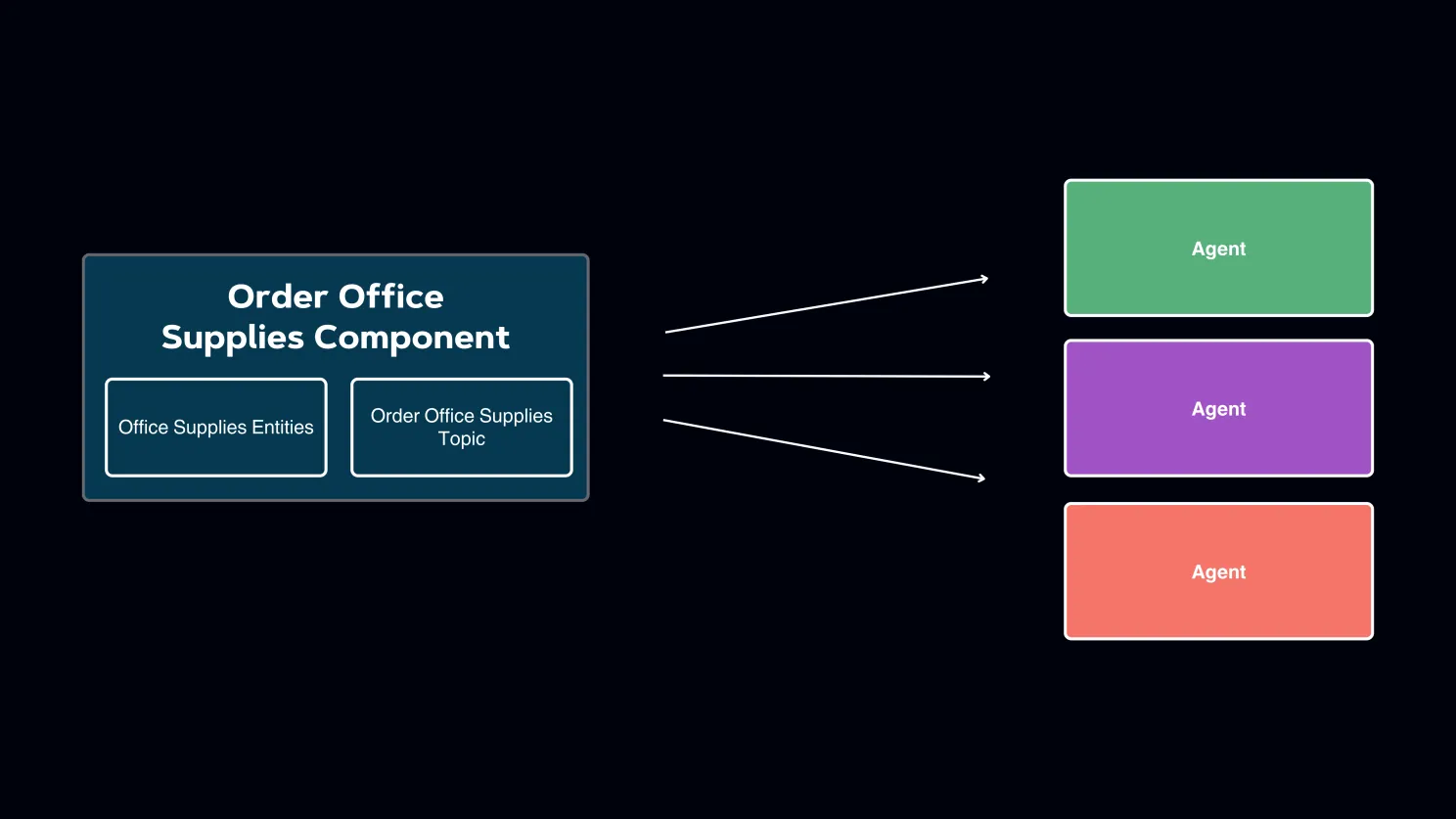
Harnessing Component Collections in Copilot Studio to Unlock Efficiency

.webp)


.webp)
A key feature within Copilot Studio is Component Collections, which enables businesses to create, manage, and reuse assets across multiple agents. This article explores the significance of Component Collections, providing a step-by-step guide on their use, alongside real-world applications that showcase their impact.
A Component Collection is a structured group of agent components—such as topics, knowledge sources, actions, and entities—that can be shared and reused across different agents within an environment. This modular approach ensures consistency, reduces development redundancy, and enhances scalability across AI-driven projects.

For example, a company with multiple customer service bots can use a Component Collection to ensure that all bots provide uniform responses, share the same knowledge sources, and execute identical actions. By centralising these assets, businesses can efficiently manage updates, enforce best practices, and deploy new agents with minimal configuration effort.

The process of setting up Component Collections is straightforward, allowing users to create them directly from an agent's settings or through the Library page in Copilot Studio.

In multi-environment deployments (e.g., development, testing, production), transferring Component Collections is essential. Copilot Studio supports exporting and importing collections using solutions, ensuring controlled deployment and maintenance.

Let’s imagine we have an agent, and that agent has a bunch of different topics, entities, actions, etc. Let’s say I look at everything inside this agent, and from those, I want to take the agent’s ability to order office supplies, as I want each department to be able to handle the management of its office supplies. First, I need to look inside and group together all the components that apply to that function. In this case, the “Order Office Supplies Topic” and the “Office Supplies Entities.”

By doing this, you're creating a reusable component that encapsulates both the actions (the functions that the component performs) and the entities (the data or objects involved in the function). Once grouped, you can extract this collection of related actions and entities into a component that can be used across different departments or scenarios.

In large organisations, different departments often need to build and manage their own AI environments while still benefiting from shared assets such as workflows, entities, and automation processes.
For example, imagine Department 1 and Department 2 both require access to reusable workflows and entities but need the flexibility to build their own environments independently. By leveraging managed reusable components, each department can create and deploy assets that are accessible across the organisation while ensuring that modifications are controlled. This setup allows departments to operate autonomously without risking inconsistencies or accidental changes that could disrupt workflows.
By maintaining governance and consistency, organisations can facilitate collaboration while preserving the integrity of core components.
Organisations that operate under a Center of Excellence (CoE) model rely on standardised data structures, workflows, and business rules to maintain uniformity across departments.
A common challenge arises when multiple teams require access to the same customer data, product catalog, or compliance rules. Instead of each team defining their own version of these entities—leading to discrepancies and data governance issues—a CoE can centralise these assets into managed reusable components. This approach ensures that every department works with a consistent, pre-approved version of the data, preventing fragmentation and errors.
With managed components, organisations can define core business entities once and distribute them organisation-wide, ensuring data integrity while simplifying updates and maintenance.
Independent Software Vendors (ISVs) often need to distribute reusable components to clients while maintaining control over core functionality. The challenge is balancing flexibility for customers with security and stability in the deployed solution.
By packaging components as managed reusable assets, ISVs can prevent clients from modifying critical functionality while still allowing them to receive version updates. This ensures that each client is always using the latest, optimised version of the product without compromising security or breaking integrations.
With this approach, ISVs can:
One of the key advantages of managed reusable components is the ability to import and export topic-level functionality. This means organisations can package a set of related actions, entities, and topics into a single, structured unit that can be easily transferred between environments or departments.
By structuring components in this way, businesses can:
Additionally, controlled updates ensure that future implementations always reflect the latest changes while safeguarding against unwanted modifications. This allows organisations to innovate rapidly while maintaining governance, reducing the risks associated with inconsistent AI deployments.
Component collections in Copilot Studio aren’t just a technical convenience, they are a fundamental shift in how organisations build, share, and scale AI-driven solutions. By enabling teams to reuse, refine, and distribute critical assets without reinventing the wheel, component collections break down silos, accelerate innovation, and empower teams to focus on what truly matters: delivering impact.
Imagine a world where your AI solutions evolve as fast as your business does—where departments don’t struggle with duplicated efforts, where updates happen seamlessly across teams, and where governance is a safeguard, not a roadblock. That’s the power of managed reusable components. They don’t just improve efficiency; they liberate teams to create, collaborate, and innovate freely, without sacrificing consistency, security, or control.
We believe that true AI adoption isn’t about just deploying technology—it’s about empowering people to work smarter, faster, and more effectively. That’s why we’ve developed the Copilot Key User’s Guide, a comprehensive resource that covers Copilot Studio, governance strategies, automation best practices, and everything else you need to build AI solutions that scale.
